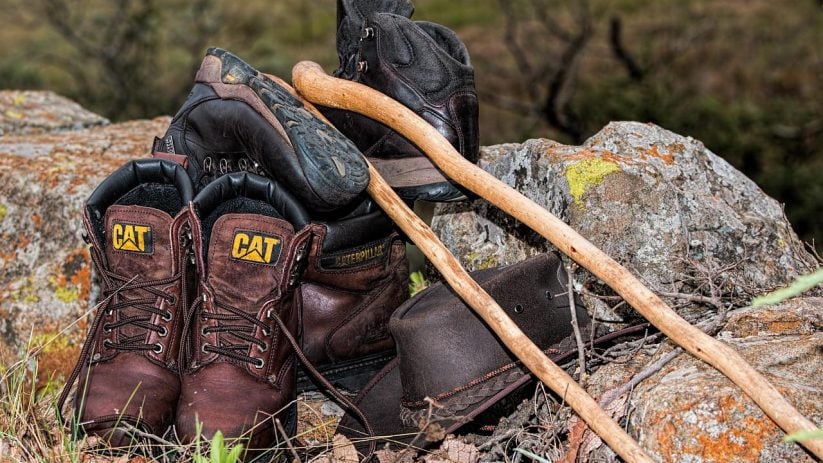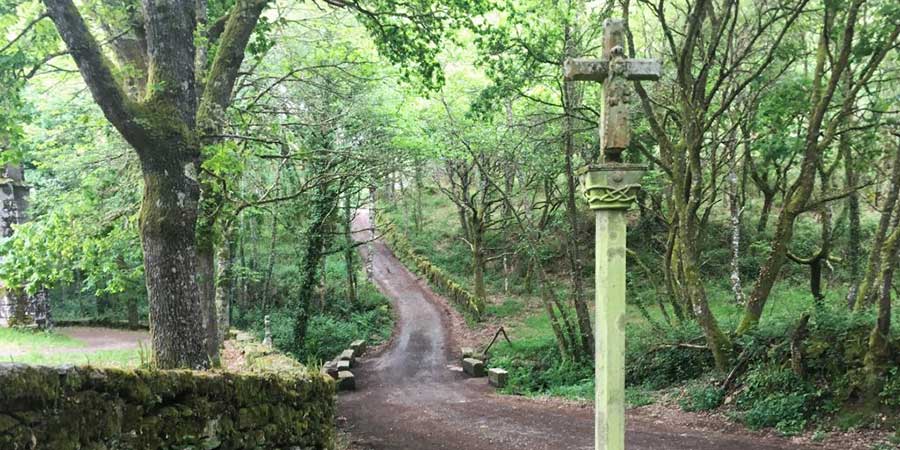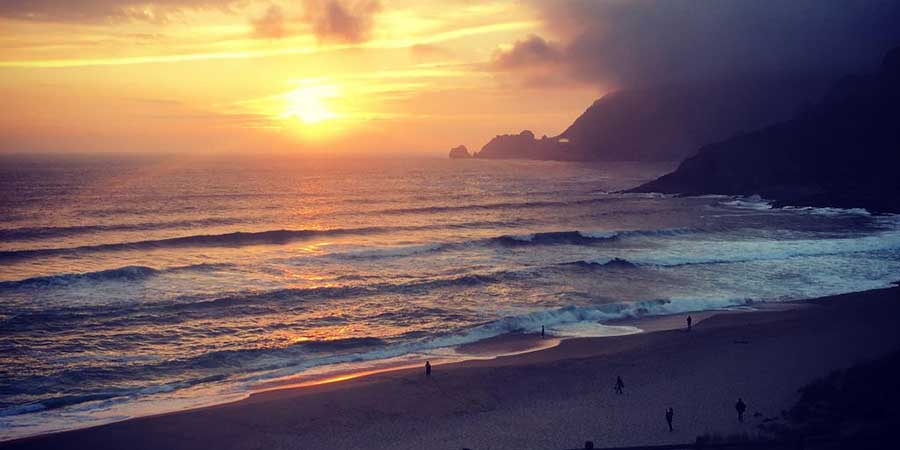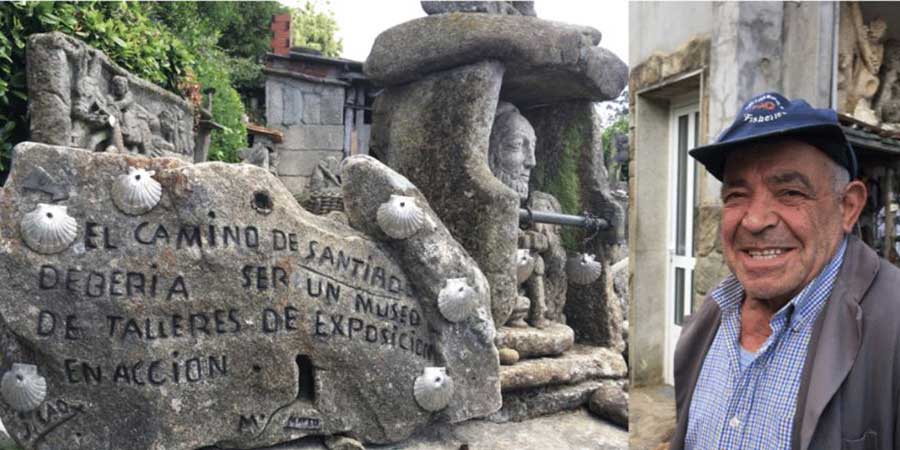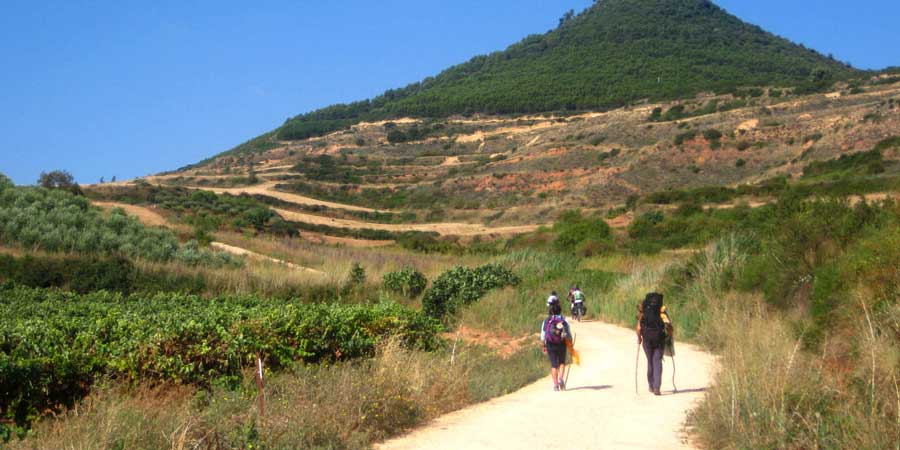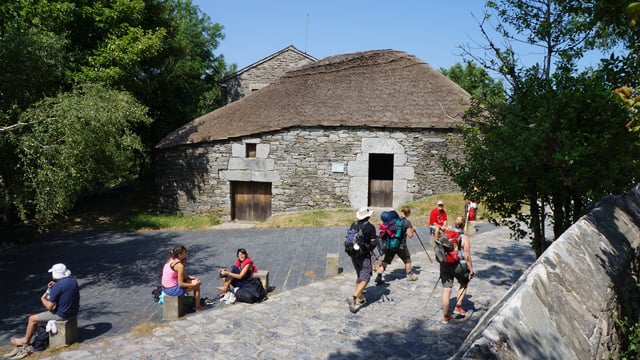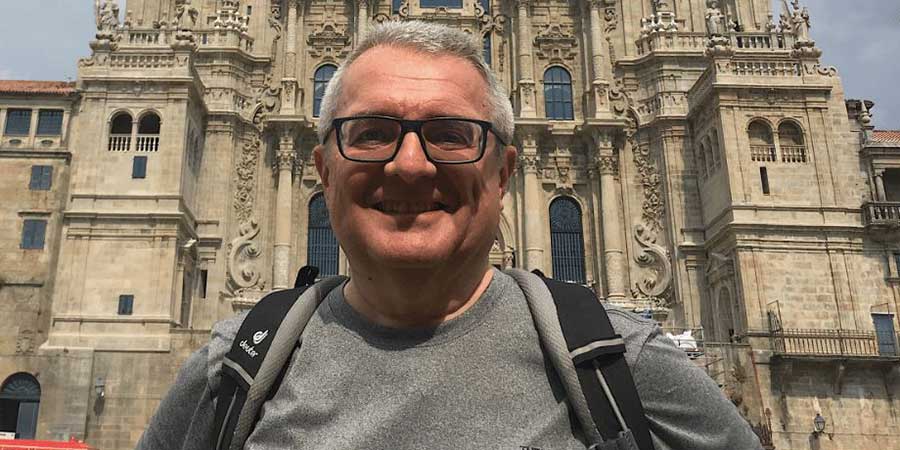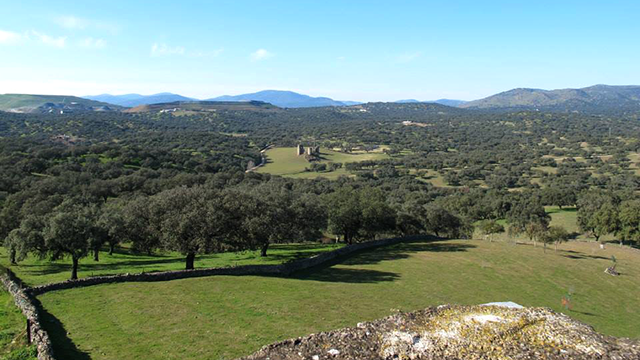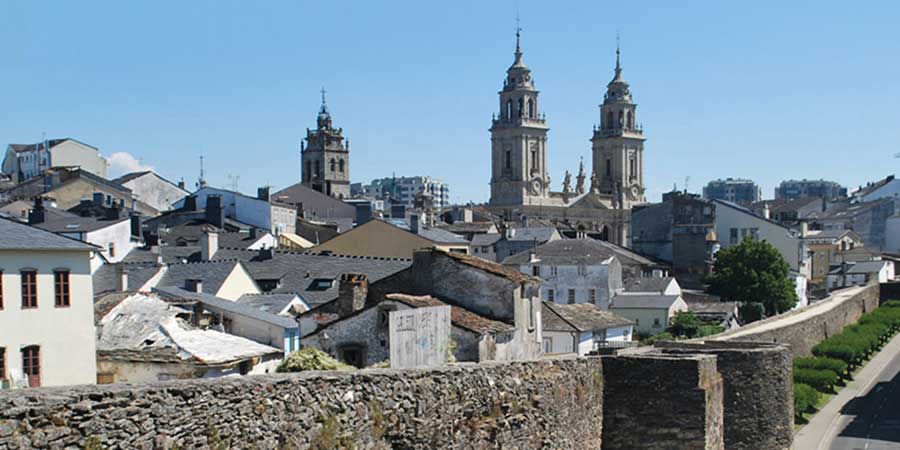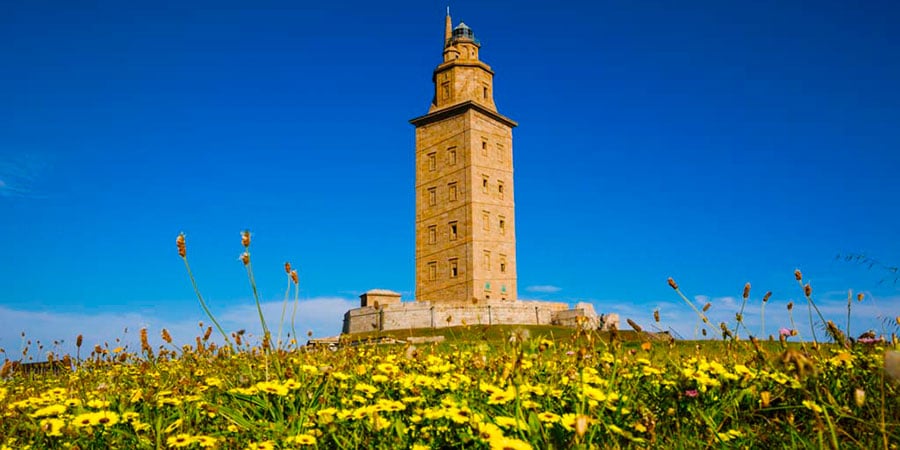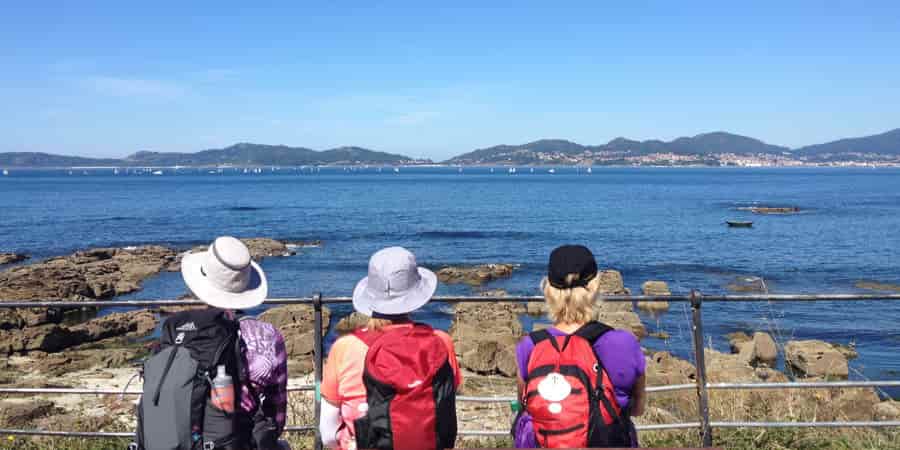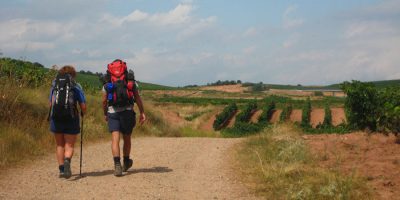Short Camino Stories From Dario’s Camino Trips
Dario is a retired Italian journalist and he has travelled many Camino routes with us over the years. He has sent us 16 snippets of his different trips which vary from short Camino stories of carved rituals, Galician traditions and magical encounters with fellow pilgrims.
Enjoy reading these fascinating short Camino stories from his experiences along the Camino de Santiago:
1. Why
It is time to get back on the road. Back to Galicia, on a road that I have not yet traveled, between hills thick of oak and eucalyptus woods, between ancient villages and paths traced in the mists of time. Another hundred and some kilometers to Santiago de Compostela, the Cathedral, the sepulcher of the Apostle.
For the friends who accompany me in this Way there is the enthusiasm of discovery. For me is different. I did it eight times, towards that great magnet that continues to attract me with the power of its history, its legends, its multi-millennial narration. And of his universal message, which is simply this: we all have the same destiny, the same final goal, even if we follow different paths.
We forget it too often, leaving us overwhelmed by fear, sadness, malice, mistrust, prejudice, anger, lies, hatred. In short, from the great darkness of the soul.
That’s why I get back on the road: to find once again among those ancient stones and in my mind the other road, the most difficult one, the one that is always preached and almost never traveled.
Walking here, sometimes, is useful.
2. St. John’s herbs
St. John Baptist, the 24th of June, is an important feast. Almost everywhere in Catholic lands, people light fires at the night. It is an ancient rite: after the solstice, the days get shorter, and so it is necessary to exorcise symbolically the darkness.
In many Galician farms there is also a different, ancient ritual for the night of San Juan: they prepare a basin with spring water, herbs and wildflowers and they leave it next to the well for the whole night.
On the morning of the 25th everybody in the farm wet his face with that water, which took the magic of the night of San Juan and the energy of plants grown while the length of the days was still increasing, until the solstice.
Casa de Iglexia, Arzúa, 06.25.2015 – French Way
3. The Enemies
Among the obligations of the ancient pilgrims, there was that, in front of the sepulcher of the Apostle, they had to pray for their enemies, sincerely invoking for them every blessing. “Sincerely”, in this case, it is a very demanding adverb.
But precisely in this junction is one of the keystones of the Camino. In front of the tomb of Saint James, I asked myself if I have enemies to pray for. I do not think I have any, but I have prayed the same for them and for all the enemies of the world. I think they need it anyway.
Santiago de Compostela, 06.29.2015 – French Way
4. The Christ of Furelos
Furelos is a village a few kilometres before Melide. You cross an ancient Roman bridge, after which there is a small church, dedicated to San Xoan, that most pilgrims ignore. The steps of the church are high and uncomfortable and lead to the side entrance.
The church is small and snug, but its true treasure is not immediately under the eyes of those who enter. You have to turn around, and an image of an astounding force explodes in your eyes: the Christ of the pilgrims. Crucified, he tends his right hand downward, welcoming those who walk for him, who on the cross is giving his life for everybody.
Stop and reflect on the power of that gesture. And, beyond any rhetoric, you understand the true meaning of words like mercy, pity, and forgiveness. A piece of carved and colored wood embodies universal love.
And whether you believe it or not, sitting on a small wooden bench in front of Him, you feel the power of a unique and timeless gesture, which leaves you astonished and disarmed, as only absolute Love can do.
Furelos, 07.05.2016 – French Way
5. Prehistorical path
Teresa has a small son and her work is to study Prehistory. It makes a certain impression to walk with her and a group of friends on a hill full of puzzles dating back four thousand years ago. The petroglyphs museum, where you can see the ancient graffiti on rock, is in Campo Lameiro. On 54 acres it is grouped the most significant area of Galician rock art.
The park has been restored to the old conditions: no eucalyptus, imported into Galicia only in the last century. It’s a fascinating journey through time, in a detailed but enjoyable indoor walk inside the museum and then in an hour and a quarter of a walk in the park.
On the ancient engravings, Teresa guided us between hypotheses and legends: the holes that could represent stars, the concentric circles that means water, the deer symbolizing regeneration (the horns grow back), sexual power and pure strength.
And the great enigma: why these engravings, even the abstract ones, are the same all over the world? Why they never depicted scenes of daily life but only hunting? What were the functions of these engravings, which required long time and great effort?
The visit ends in the reconstruction of a village of four thousand years ago, sitting in a hut of mud and branches able to withstand the Galician rain and to host a small tribe around a fireplace.
Teresa gives us the latest enigmas and the uncertain assumptions of historians and archaeologists. Our Past knows how to keep knowledge from which our history was born and that we do not yet know how to grasp.
Another incredible lesson learned on the long road to Santiago.
Campo Lameiro, 07.11.2017 – Portuguese Coastal Way
6. The last church
Here the ancient pilgrims prayed when they reached Finisterre. They were not looking for the Km.0 marker but for this church on the edge of the world, Santa Maria de las Arenas, the last parish on the Way, before the Atlantic Ocean, perhaps the westernmost of the continent. We receive loads of lessons on the Way.
I remember one of the many: everyone walks with his step, in the Way as in life. But the important thing is that the last one must never be left alone. We have to learn to extend a hand: someone who needs it will find it.
Finisterre, 07.16.2017 – Portuguese Coastal Way
7. Jesus and San Salvador
At 5 pm the church of San Salvador in Vilar de Narón, a couple of km from the Camino path, was closed. No Mass, no visits. You could only admire the elegant line, the delicate lawn with the daisies, the beautiful portal reinforced by metal studs and decorations, the refined sculptures that frame it, which for many are a “signature” of Mastro Mateo, the architect of the Cathedral of Santiago.
A kind girl told us to wait, she went to call the church keeper: it was his day off. You’d expect a crabby guy who can not wait to get a tip and kick you out of the temple.
Instead, Jesus Garcia, despite his 89 years, rushes happily, refuses every tipping with a smile, opens the church, turns on the lights, grabs his wooden wand and in his simple and well-marked Spanish takes us back in the centuries.
He shows us how was the church when the Knights of Santiago decided to raise it and make it their own priory and burial place. He shows us the signs in the walls that evoke the Templars and the Teutonic Knights.
He shows us the Celtic symbols and explains them in a Christian way: the flower of fruitfulness that can evoke the Annunciation, the trisqel that speaks to us of the Trinity, the wooden statue of Christ carved in the seventeenth century that holds the world in his hands. And frescoes from the 13th century and earlier.
And ancient tombs with lions, a divine symbol, that dominate wolves (malice) and wild boars (anger). I could greatly extend the list of things that Jesus showed and illustrated with short, didactic descriptions.
He opened a world to us, and at the end he greeted us smiling happily, with an energetic handshake and then with a gesture of his own, holding his hands and wishing us a happy journey, almost to say: I am with you, thanks for coming, thank you for listening.
Thanks to you, Jesus: you showed us the simplicity of knowledge, the prodigy of your humble and great culture, and your love for a unique church. And thanks also for your greetings, which we bring with us as a blessing. You are one of the most precious treasures of this church.
Vilar de Narón, 06.05.2017 – French Way
8. The lady of the raspberries
She has a small white dog and an old, pink Fiat 600. The lady of raspberries is brown-haired, small and kind. Her name is Lourdes.
The first time I passed from here, between Melide and Arzua, in 2015: there was only her stand, with small boxes of raspberries and some other fruit. And a basket for the pilgrims’ offers.
“I wanted to help those who were on the Way, not to make money, but the offers were generous” tells Lourdes.
And so she enlarged (but only slightly) the stand, and now she sells the fruit, with drinks, juices and small things that can alleviate the fatigue of the walkers.
Here, in the shade of two large oaks, many people stop. Prices are low. And Lourdes has also something for those who can not pay: the fresh water from the tanks is free. When you arrive you get something, you seat, you also can have a stamp on the Credencial.
In a corner I see the jacket forgotten by one of the Paraguayan girls I crossed a little while ago. “Madam, look what they have forgotten!”. She points out to me a small pole: “Hang it there, they will soon come back to pick it up. People forget everything … Look …” and shows me a purse. Then he points to a stick. “Is it yours?”. “No”.
She grabs it, waves it and recalls three ladies who just left, one of whom thanks and returns to recover the stick. Lourdes smiles at me: “This place is like a magnet: it keeps things”. Yes Madam.
We often forget things where we would like to return. Beautiful places and kind people remain in the heart. Adios, Lourdes! After less than a hundred meters here’s the Paraguayan girl who il hurrying back looking for the jacket. “There, on the pole!” we tell her, she sees it from afar, smiles, thanks, calms down.
The magnet of the lady of the raspberries does not hold anything back. Just a little bit of your heart, just for a few minutes. Between a white dog and an old, pink Fiat 600.
On the road to Arzúa, 06.07,2017, French Way
9. The sculptor of dreams
He walks slowly, like his old dog, under the weight of his 86 years. José Cao Lata opens the gate to his house on Mount Gozo.
The sculptor’s garden is full of statues, although now he no longer has the strength to carry out his dreams of stone. His favorite personalities, who wanted to reunite in a single portrait, are Picasso and Pope John Paul II.
“They had the strength to achieve their dreams. I only have the strength to dream” says José. His dream? His statues, but not only his, along the Camino de Santiago.
“The University, the Government who administers public money does not care about art,” says José. “And I do not care about them! Do you want that statue, hermano, brother? It’s cheap for you, but not for me, because I have carved the truth: telling the truth always costs. But it’s the right price that life makes you pay”.
Bravo José. Thank you for your teachings. See you next year. “Yes, if I’m still alive, hermano”. And if we were not alive in a year, let’s hope our dreams are!
Monte do Gozo, 06.09.2017 – French Way
10. The End of the World “La posta del Sol”: the sunset.
And here in Finisterre as everywhere on the planet it comes every day. “Ma cada posta del Sol es diferente”: every sunset is different, smiles Ismael, the taxi driver.
He accompanies us to the lighthouse, to avoid the last torment of the ailments of a couple of us. Ismael lives here in the village. He saw countless sunsets at the end of the world.
Ismael, the taxi driver with the name of a whaler, son of a fisherman who loved to read Moby Dick, lived here, like his father and his grandfather. Fishermen, at the end of the world.
With us, travelers at the end of the Way. And everybody watching the sun die every day, because every day is different. Plus this is one of the places where the sunset seems to get different meanings and different importance.
There will also be days when it rains, others in fog, others where the clouds are so thick and heavy that the sun can not even be seen. And yet you know it’s over there, and there it goes down and plunges into the Atlantic Ocean.
The sun dies there, right where the light becomes dark with the promise of eternal rebirth. A perennial miracle. And if you can overcome the time and imagine the amazement of the ancients, who have come this far to be sure they are really on the edge of the world, then you understand how great their respect for the power of creation should be.
That power that here manifests its greatness. And you feel as fragile as those ancient people must have felt. But also strong, because you too are part of this creation. And then you do not think anymore and you get lost in this majestic beauty.
Finisterre, 06.11.2017 – French Way
11. Oseira and the monks
The monastery of Santa Maria la Real, in Oseira, currently hosts a community of Trappists who also sell the fruits of their work on the web: liqueurs, jams, cookies, chocolate, books. There are 12 in all.
In 1989, these monks won an award from the European Union for taking care of the restoration of the ancient building. The monastery has existed since at least 1137: the first citations in official documents date back to that year.
It occupies an enormous area, with buildings of different styles and a splendid church between the Romanesque and the Proto-Gothic. In the place of honor, in the center of the apse, the monks placed a statue of Maestro Mateo, the architect of the Cathedral of Santiago de Compostela.
“To me – explains Father Luis, the monk who guides us – is the Gioconda of Mastro Mateo, a rare breastfeeding Madonna created in the thirteenth century, without particular attributes: no crown, no halo, a woman who breastfeeds her baby, with a just outlined smile and the glance lost far away, because that baby is really special: that baby is Jesus “.
We were about to leave the monastery, this masterpiece of San Bernardo di Chiaravalle, a medieval genius who remixed Europe with his ideas and his rules. And at this point we meet him.
I do not know how old is this monk, and I do not know how many years he spent here in Oseira. But I know the rule: for a Trappist monk it is impossible, unprecedented to leave his monastery.
The monk walks very slowly. His back and legs are not the same as they used to be, but his gaze and his mind are still lively. He smiles as he refuses our help to climb a step. He serenely walks away in a cloister, to who knows what task, unraveling the thin thread of his life with enormous dignity and courage. If each of us had his strength, we would all live in a better world.
Buen Camino, Father Without Name!
Oseira, 08.07.2017 – Via de la Plata
12. Seagulls
In the port of Finisterre, the fisherman approaches. He smiles, he wants to talk. He shows his boat, and speaks proudly about his daughter, a law graduate with a master’s in progress. He is a fisherman, son of a fisherman and as the years weigh he has taken a boat a little smaller. His father taught him all he knows about the sea and fishing has.
“Do you want to see seagulls closer?”. Two minutes and he is back with a cup full of little fishes, he leans them on the ground and it’s all a flying seagulls: a scene from “Birds” by Hitchcock. The fisherman smiles and tells us that his father saved a seagull from the sticks of his colleagues.
“A short time later my father died, and when they brought out his coffin for the funeral a seagull settled on the coffin, while others flew all around.”
The farewell to a friend. A nice story. With the doubt that it is invented. But friendship continues between the fisherman and the gulls.
Finisterre, 08.13.2017 – Via de la Plata
13. The pulpo
Mercedes has a particular job: she cooks the pulpo at “A Garnacha.” The best Galician pulp is eaten at Melide. And the best pulp of Melide is from “A Garnacha”. Mercedes lives next to his pots, and cooks up to 600 kg of octopus every weekend. “The secrets? The raw material; cooking time (20 minutes), passion”. And then? “And then excuse me, I’m ready for war”.
And with a smile, Mercedes gets back to work.
Melide, 05.01.2018 – Original Way
14. Tuna de Derecho
The “Tuna” is a musical complex based on stringed instruments that is inspired by the ancient Spanish goliardic traditions. Renaissance college students had little money. To maintain their studies they played serenades and gathered in musical ensembles (tunas). The tradition has remained and the Tuna de Derecho (the Tuna of the Law School at Santiago University) performs every summer evening in Praza de Obradoiro, in front of the Cathedral.
The red scarf has the color and the emblem of the faculty. On the mantle (capa) many colored ribbons. Each with a motto recalls an affection: the mother, the girlfriend, a friend who is gone.
A song by Tuna says: “Cada cinta de mi capa guarda un trocito de mi corazon”: Every ribbon of my cloak holds a piece of my heart. In times like these, how nice it is not to lose poetry!
Santiago de Compostela, 05.04.2018 – Original Way
15. Witches
Las brujas, the witches, are popular here in Galicia. Also, at the time of the Inquisition, they burned hundreds of them. Poor women, with the only fault to have ancient peasant knowledge. If you are illiterate and live in an era when clocks have yet to be invented, how can you remember the recipe for a decoction? Maybe with a jingle for the ingredients, repeated a certain number of times to mark the cooking time.
And if they ask you under torture why you were singing that song and why you repeat it precisely that number of times, it is difficult for you to answer. And then you are ready to confess anything, without imagining that the stake awaits you.
Our great civilization…
Sigüeiro, 06.28.2018 – English Way
Thank you to Dario for sharing his short Camino stories and fantastic Camino memories with us. We look forward to hearing more about all of his future adventures.
For more information about any of the Camino de Santiago routes, please don’t hesitate to contact us. If you would like to share your own Camino stories, we would love to hear them.
